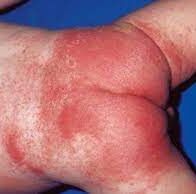Understanding Child Growth and Development: Milestones to Watch For
Growth and development in humans is an incredibly complex and fascinating process. From the moment of conception, a human being is constantly in a state of growth and development, maturing from an embryo to a fully-grown adult. This process is divided into three distinct stages—prenatal, infancy and childhood, and adolescence and adulthood—each with its own unique set of physical, cognitive, and emotional changes. As a person progresses through each of these stages, it is important to understand the various aspects of development in order to ensure healthy growth and development. Please keep reading for details on the following topics:
Overview of growth and development
How to help babies learn and grow
Milestones by age
Common problems in Babies
Toddlers
School age children
Children between the ages of 11 and 14 years
Teenagers
When to seek urgent medical care

OVERVIEW OF GROWTH AND DEVELOPMENT
Growth and development occur differently for each baby since this occurs according to their pace
The growth rate of babies accelerates quickly during their first year, both in height and head size
Babies learn at a rapid rate and have great memory
They demonstrate emotions by crying
They absorb and mimic the language spoken around them
Firstly, they learn how to sit, then stand and walk
Every 2 months, clinic visits will be arranged by the doctor to detect problems regarding the baby’s growth and development
The baby will be weighed and measured and compared with his previous readings
A physical examination will be conducted to identify problems
The child’s vaccination record will be reviewed and needed vaccines will be administered or scheduled
General questions about the baby’s wellbeing, sills performing for the age will be asked, and the results compared with those expected for the child’s age
Advice will be given on ways to boost the child’s growth and developmental skills
WHEN TO SEEK URGENT MEDICAL CARE FOR A BABY
It is important to know when to seek urgent medical care, as delaying appropriate treatment can lead to further health complications. If your baby experiences any of the following symptoms, you should seek medical help immediately. If you have any doubts about whether you should seek medical care, it is always better to err on the side of caution and consult with your doctor.
The baby has not achieved the expected growth or developmental target
The baby is not eating
The baby is digressing from already learnt skills
The baby appears to be having difficulty hearing
The mother is feeling overwhelmed and is unable to care for baby
HOW TO HELP THE BABY LEARN AND GROW
Respond to the baby’s cries and provide comfort as necessary
Perform activities to help stimulate the growth of the baby’s mind by reading, talking and playing games
Put the baby to lay on the tummy in a safe location so that he can play and develop the ability to crawl and, on the back, when sleeping to play a part in preventing SIDS (sudden infant death syndrome)
Due to curiosity, babies tend to be attracted to danger, therefore their attention can be reverted by offering them a toy as a form of distraction
MILESTONE BY AGE
At 2 months, babies begin to smile
At 4 months, babies begin to use their arms to show excitement or to try to touch objects
At 6 months, the babies sit up with minimal support. By the weight at birth should be doubled
At 9 months, babies grow very attached to the mother, usually getting upset when she leaves. The baby may begin to crawl
At 12 months, the birth weight triples. Babies begin to say and understand a few words. The baby may begin to walk
COMMON PROBLEMS IN BABIES
Sudden infant death syndrome (SIDS)

Sudden Infant Death Syndrome (SIDS) is a tragic and sudden death of an infant under the age of one, that is often unexplainable. It is the leading cause of death in infants between one month and one year of age. Although research is ongoing, the exact cause of SIDS is still unknown. Common risk factors associated with SIDS include sleeping on the stomach, exposure to cigarette smoke, sleeping on a soft surface and overheating. It is important for parents to be aware of these risk factors and take the necessary steps to reduce the likelihood of SIDS.
Sleeping

Sleep is one of the most important parts of our daily lives. It helps us stay healthy, energized and alert throughout the day. Without sufficient sleep, our bodies struggle to perform basic tasks, and our minds become foggy. Our bodies and minds need to rest and recharge in order to function optimally, and that is why it is essential to get enough sleep every night. As we sleep, our bodies restore energy and repair tissues, while our brains process information from the day and store memories. Getting the right amount of sleep is important for both our physical and mental well-being and is vital for our overall health.
In the beginning, baby may be sleeping through the night until the routine changes to staying up all night
Babies usually cry when they want to sleep
It would be wise to maintain a routine for bed or nap time

Feeding your baby is an important part of their daily routine and care. It is important to understand their individual nutritional needs and feeding patterns to ensure they stay healthy and happy.
The baby’s feeding patterns may change from more frequent to less frequent as the amount of feed increases

Crying is a natural emotional response used to express a range of emotions such as sadness, joy, fear, and anger. It is an important part of being human and helps us communicate our feelings to others. Crying can be a sign of distress and can be a way to express pain, frustration, or grief. It can also be a way to release tension or stress. Additionally, crying can be a sign of joy or relief, such as when we shed tears of happiness. No matter the reason for crying, it is an essential part of being human and can help us to process our emotions.
Babies usually cry a lot initially which eventually lessens after they obtain ways of self-consoling
Choking

Choking is a serious health hazard that can occur when a person has a blockage of their airway. It can lead to a lack of oxygen reaching the lungs, which can cause serious complications. Choking can occur in adults and children, and can be caused by a variety of objects, such as food, toys, or even small pieces of clothing. It is important to be aware of the signs of choking and to take action immediately if a person has any difficulty breathing. Knowing the proper techniques for dealing with choking can save a life.
Since babies love to insert objects into their mouths, it would be wise to avoid giving small objects to the child to avoid choking
When introducing solid fluids into the diet, it would be wise to avoid giving round and hard foods to the child which can get stuck into the throat

Diaper rash is a common problem among babies and toddlers that can cause discomfort and distress. It is typically caused by prolonged contact with a wet diaper, as well as skin irritation from urine and stool. Diaper rash can also be caused by contact with certain types of detergents and fabric softeners, or if a baby is wearing a diaper that is too tight or too loose. Fortunately, diaper rash is easily treatable and can be prevented with some simple steps.
To avoid diaper rash:
The diaper must be changed more frequently
Wipe the baby’s bottom with caution
Special ointments can be applied to the rash
Sibling rivalry

Sibling rivalry is a common phenomenon among siblings, which often results in competition, disagreement, and even hostility between brothers and sisters. It has been observed in families across cultures, religions, and generations. While some sibling rivalry can be beneficial, allowing siblings to learn how to negotiate, cooperate, and develop empathy, it can also create tension and animosity in a family. Understanding the causes of sibling rivalry and learning how to manage it can help families cope with this difficult dynamic.
The older child may feel envious of the new baby
To prepare for sibling rivalry:
The parents can spend time with together just the older child
By assigning a role to the child such as selecting clothing for the baby
It is important to speak to the child regarding the importance of helping with taking care of the baby
Separation anxiety

Separation anxiety is a disorder that affects many people, causing feelings of distress and worry when separated from loved ones. This type of anxiety is often associated with children, but it can also affect adults. Symptoms of separation anxiety can include difficulty sleeping, excessive worrying, irritability, difficulty concentrating, and physical symptoms such as headaches or stomachaches. Treatment typically involves cognitive-behavioral therapy, medications, and lifestyle changes to help reduce stress and anxiety.
Ways to distract the baby to avoid separation anxiety
Ensure that the baby has been fed
Ensure that the baby is asleep
Offer the baby a favorite toy
TODDLER

Toddlers are an incredibly exciting and important stage of development, from 12 to 24 months. During this time period, toddlers are learning to do many new things, such as walking and talking, and exploring the world around them. They are also developing cognitively, making strides in problem-solving, memory, and language. At this stage, toddlers may display a range of emotions from joy and excitement to frustration, and they will likely require a lot of love and guidance as they learn and grow.
Children 1 to 2 years old
The growth rate slows down
The baby gains between 3 and 5 pounds and a length between 3 and 7 inches
The child continues to think, learn and remember at a very rapid rate
The have very good imagination and memory of past events
As the ability to speak progresses, by the 1st year the child is able to speak words with a few syllables, and about 50 words by the age of 2
The child begins to walk unassisted then run and climb things
The child usually tries to move objects, press buttons and turn doorknobs. Therefore, it is wise to be extra vigilante to keep the child away from danger
COMMON CONCERNS REGARDING A TODDLER
Display outbursts of rage
Eat less
Sleep less
Make messes
Seek out danger
Show separation protest
HOW TO PROMOTE HEALTHY GROWTH AND DEVELOPMENT
Helping the baby adopt healthy ways of eating
Taking the baby to all scheduled clinic visits
Ensuring that the baby receives vaccines when necessary
Adopting a healthy lifestyle to avoid infections
Perform activities to help stimulate the baby’s memory and thinking skills such as
Building blocks
Drawing on paper
Playing with toys
Moving objects around
To help boost the language skills for a toddler
Perform eye contact with the child during interaction
Speak to the child using a slow and regular speech pattern so that the child can understand
Teach the child words to describe wants and feelings
Daily stories, songs and games can help boost the child’s brain development
CHILDREN BETWEEN THE AGE 2 TO 5 YEARS

Welcome to the world of children between the ages of 2 and 5! This is an exciting time for children as they learn, explore, and make new discoveries. During this time, children are developing key skills such as communication, problem-solving, and motor skills. It is a period full of joy, growth, and development. Children in this age group can learn a range of new concepts and skills, and it is important to provide them with the right environment and resources to help them reach their full potential.
HOW CHILDREN BETWEEN THE AGE 2 TO 5 YEARS DEVELOP
They are very happy to be around other children
The rate of growth decreases and the child gains between 3 and 5 pounds or 3 inches long every year
The level of understanding increases as the child can count, identify colors, time and letters
The number of words that the child can speak increases to 200
The child develops the ability to climb stairs, kick balls and draw simple objects
WHEN THE CHILD REACHES THE AGE OF 3
The child grows in height, approximately 3 inches and a weight of 4.4 pounds
The child no longer feels separation anxiety
The child has knowledge of the name, age and sex
Enjoys playing with friends but dislikes sharing
WHEN THE CHILD REACHES 4 YEARS OLD
The weight gained is approximately 4.4 pounds and 3 inches taller
The child is able to say his or her name as well as identify colors
The child is able to sing songs and form sentences containing 5 words
The child can not only stand on one foot but climb stairs unassisted
WHEN THE CHILD REACHES 5 YEARS OLD
An additional 4.4 pounds and 1.5 to 2 inches taller is achieved
The child is now able to dress and undress self
The child is able to count and recite the alphabet
COMMON CONCERNS REGARDING A 5-YEAR-OLD
Sleeping
More than 12 hours of sleep daily is necessary
Ways to help promote healthy sleeping habits
Create a fixed bedtime pattern by
Control the television programs that the child watches to prevent nightmares
reassure the child every time he wakes up from a nightmare
Behavior
Thumb-sucking can lead to deformed teeth and difficulty speaking
When angry or frustrated the child can hold the breath until he passes out
The child may demonstrate aggressive behavior towards others
Learning to use the toilet occurs when the child is ready
CHILDREN AGED 11 TO 14 YEARS

Children aged 11 to 14 years are in a period of rapid physical, mental and psychological development. During this time, they are becoming more independent and learning to take on more responsibility. As they become increasingly exposed to different experiences, they develop their own interests and explore their identity. This is an important time for parents and guardians to provide guidance and direction in order to ensure the health and well-being of these young people.
HOW CHILDREN AGED 11 TO 14 YEARS GROW AND DEVELOP
Offer the child healthy foods to eat
Encourage the child to exercise daily
Ensure the child goes to bed on time so that he or she can get enough rest
Set rules for the child to abide by
Encourage the child to talk about set openly
Encourage the child to vent their feelings and issues and discuss ways to resolve the issues
Girls experience growth spurts at the 11 years whilst boys at 13 years old
Adolescents spend more time with their friends than their parents
COMMON CONCERNS REGARDING CHILDREN AGED 11 TO 14 YEARS
Anxiety over going to high school
Going through puberty
Growing up
How to talk about sex
Peer pressure
Staying from drugs and alcohol
Their growth spurt maximizes as they resemble adults
Girls begin menstruating
Their behaviors are unpredictable because their emotions fluctuate
TEENAGER
Teenagers today are an interesting group of people. They are transitioning from childhood to adulthood, navigating the world around them and discovering who they are. They face a lot of challenges, from peer pressure to expectations from parents and society to their own growing sense of independence. Yet, despite these difficulties, teenagers can be creative and enterprising, inspiring us with their courage and passion.
GROWTH AND DEVELOPMENT OF A TEENAGERS AGED 15 TO 18 YEARS
The teenager must be encouraged to lead a healthy lifestyle by being active and eating healthy foods
Assign the child household chores and ensuring that the complete the tasks
Set limits and rules regarding the use of the electronics, television and the social media
Encouraging the child to be involved with community activities
Make the child feel loved and appreciated at all times
Give them opportunity to talk about their feelings and listen attentively
COMMON ISSUES REGARDING TEENAGERS AND STRATEGIES TO IMPROVE
How to avoid drinking, smoking and using drugs
Give tips on how to prevent drugs, alcohol and tobacco
Set rules for the adolescent and punishment for breaking the rules
Educate the adolescent on the negative effects of the drug, alcohol and the smoking
Teach the teenager how to say ‘NO’ when offered the drug, alcohol and tobacco
Being sure to play an active role in the child’s life
Having an open relationship with the child to make him feel comfortable enough to talk and ask for advice when they’re having problems
Immediately taking the necessary action if signs that the child is using drugs, alcohol or tobacco
How to focus in school
Encouraging the child to focus on school and highlight the benefits of such
Help the teenager to make future plans
Helping the child find a career and how to pursue it
Reward the child for accomplishing positive things
How to drive safely
Teaching the child how to drive safely
How to overcome pressure for sex
Overcoming pressure for sex requires assertiveness, clear communication, self-awareness, and understanding your rights. You are not obligated to engage in any activity that makes you uncomfortable. Your feelings, boundaries, and well-being come first. Surround yourself with people who respect your choices, and don’t hesitate to seek support if you feel pressured or unsafe. Here are strategies to navigate and handle such situations:
1. Know Your Boundaries
- Define Your Limits: Be clear about your personal boundaries and comfort levels regarding physical intimacy.
- Respect Yourself: Recognize that your feelings and choices are valid and deserve respect.
2. Communicate Clearly
- Say “No” Firmly: Use direct and confident language to express your refusal. Examples:
- “I’m not ready for this.”
- “I don’t feel comfortable.”
- “No, this isn’t something I want.”
- Be Consistent: Avoid sending mixed signals; maintain your position if pressured repeatedly.
- Use “I” Statements: Focus on your feelings to avoid blame. For instance, “I feel uncomfortable” rather than “You’re pressuring me.”
3. Avoid Situations Where Pressure May Arise
- Choose Safe Environments: Stay in public or group settings if you feel the person might pressure you.
- Set Up an Exit Plan: Have a plan to leave the situation if you feel uncomfortable.
4. Build Confidence and Assertiveness
- Practice Responses: Prepare and rehearse ways to say no in different situations.
- Be Assertive: Stand tall, maintain eye contact, and speak with a firm tone. This conveys confidence and reduces the likelihood of further pressure.
5. Seek Support
- Talk to Trusted People: Share your concerns with friends, family, or a counselor. They can provide advice, encouragement, and support.
- Join Support Groups: Being part of a community where others share similar experiences can help you feel empowered.
6. Understand Your Rights
- You Have Control Over Your Body: Remember, no one has the right to force or pressure you into sexual activity.
- Consent Is Essential: Sexual activity should always be consensual. Lack of enthusiastic consent means it should not happen.
7. Recognize Manipulative Tactics
- Emotional Pressure: Statements like “If you love me, you’ll do it” are manipulative. Love and respect do not require compromising your boundaries.
- Blame-Shifting: If someone accuses you of being unfair or overreacting, recognize it as an attempt to undermine your confidence.
- Threats or Coercion: These are serious red flags. Remove yourself from the situation and seek help if needed.
8. Seek Professional Help if Necessary
- Counseling: A therapist can help you build self-esteem and learn strategies to deal with pressure.
- Hotlines: If you feel unsafe or need immediate support, reach out to organizations that provide confidential help.
9. Protect Yourself
- Trust Your Instincts: If you feel unsafe or uncomfortable, remove yourself from the situation immediately.
- Have a Safety Plan: Let someone know where you are and have a friend available to help if needed.
10. Educate Yourself and Others
- Learn About Consent: Understand and promote the importance of mutual consent in relationships.
- Advocate for Respect: Encourage open conversations about healthy boundaries and respect in relationships.
10. Parents and guardians
- Talking to the child about sex and dating
- Teaching the child to respect other’s property and their decisions
- Supervising the child’s online activities
HOW TO PROMOTE THE TEENAGER’S PHYSICAL DEVELOPMENT
As adolescence progresses, teenagers usually late at nights and oversleep to cope with the body changes
It would be wise to set curfew and schedules for them to ensure that they are in bed by a certain hour
The teenager can be taught skin care to prevent or manage acne
Since they may develop a body image disturbance, they can be given advice on how to improve their self image
They can be given strategies on how to differentiate healthy feeds from unhealthy ones
Signs of peer pressure and ways of dealing with such will be taught to the teenagers
The teenager can be advised on the importance of avoiding drugs and alcohol
Parents must be open with their children and set rules for the child in order to ensure that they lead health lives
WAYS TO PROMOTE HEALTH SOCIAL AND EMOTIONAL DEVELOPMENT AMONGST TEENAGERS
At this stage teenagers are usually confused about their gender and sexual status, therefore, by acting in a non-discriminatory way towards them
Attempting to addressing their issues to help them feel safe
Establish a trusty rapport with the teenager to encourage them to air their concerns when necessary
Encourage community service through volunteering. to connect with others
Taking part in healthy discussions and research to increase the intellectual capacity
Make school assignment a priority over social activities
Encourage daily exercise to keep the body healthy
By being a good role model, violence among teenagers can be prevented
Being able to detect the warning signs of suicide among teenagers in order to decrease the likelihood
Disclaimer: The information provided in this content is for general informational purposes only. It is not intended as medical or healthcare advice, diagnosis, or treatment. Always seek the advice of a qualified healthcare professional with any questions you may have regarding a medical condition or healthcare decisions.

